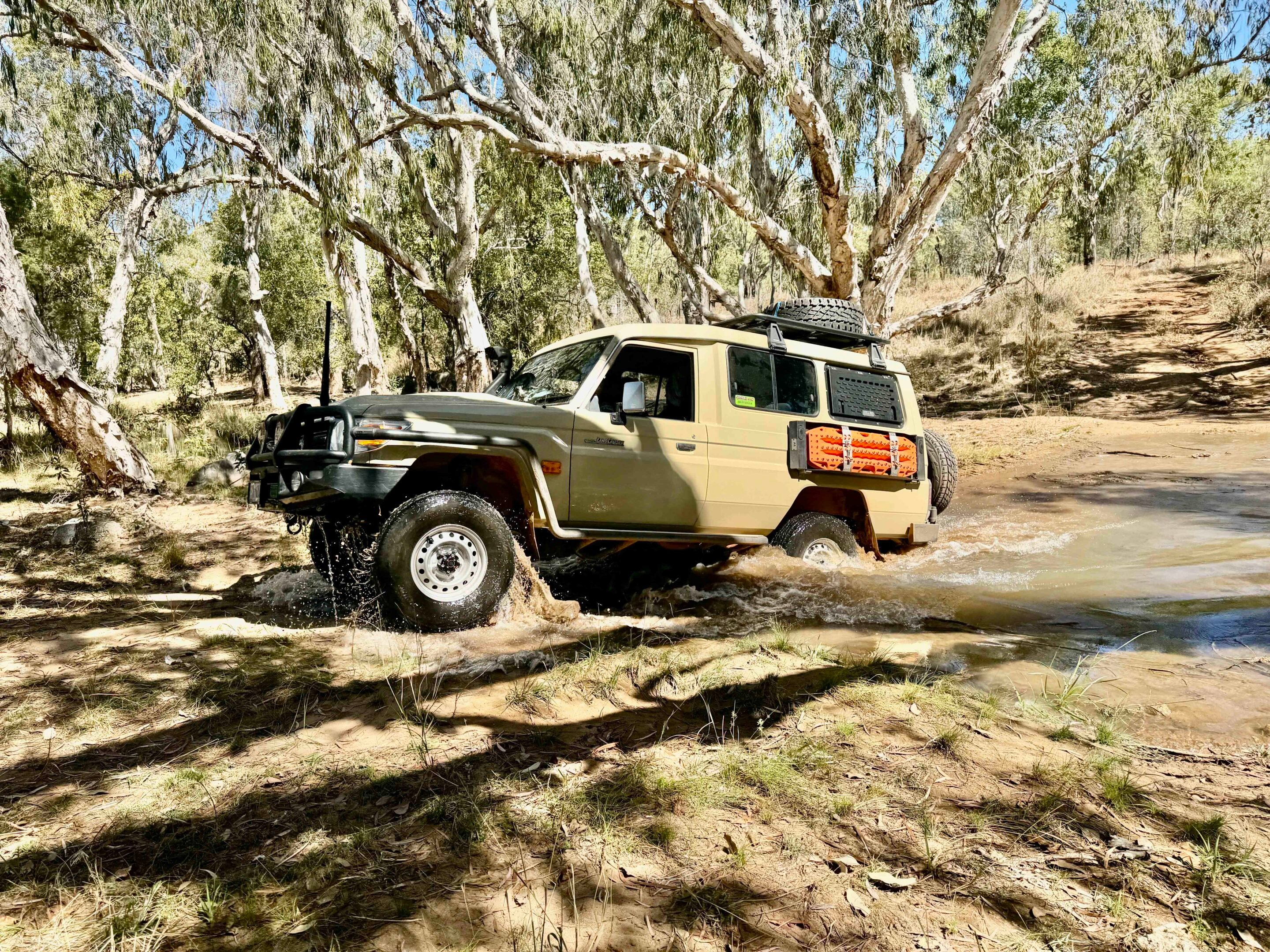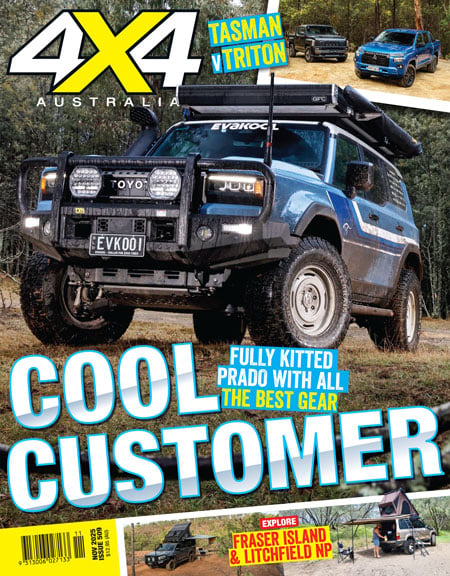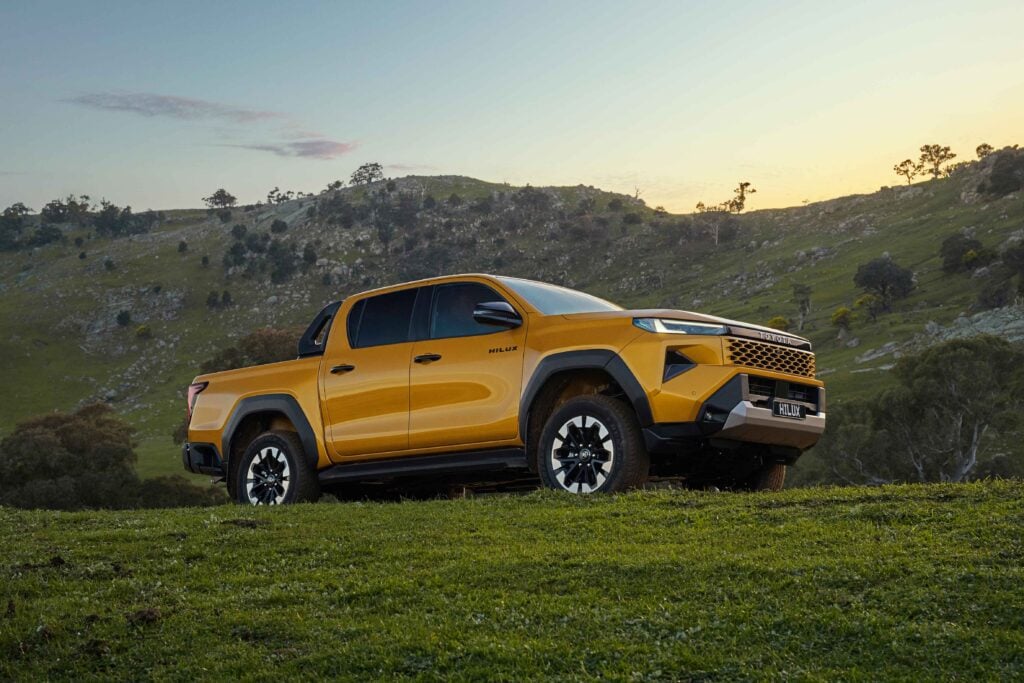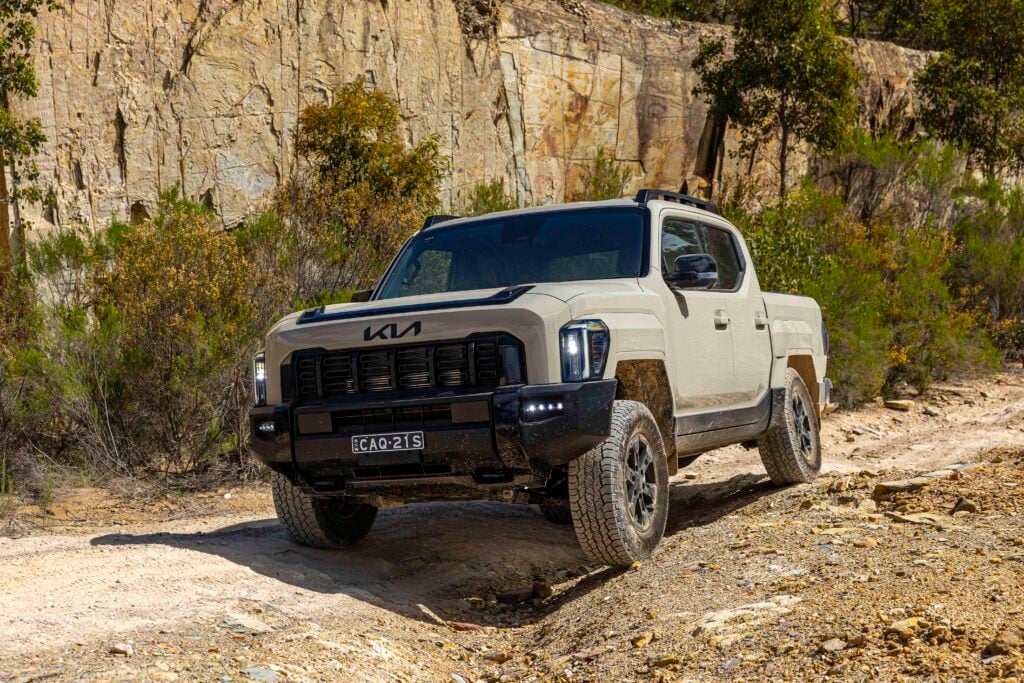The Troopy has cruised through a fairly easy patch over the past six months, following a summer stint exploring the stunning Eyre and Yorke peninsulas in South Australia.
Clocking up 47,000km so far – including trips along the Canning Stock Route and through the Gulf Country – it hasn’t missed a beat, and we haven’t broken anything either, which is a win in my book. Since summer, I’ve been off roaming in my battle-hardened Patrol on a Victorian High Country run, and more recently enjoying the comforts of a well-set-up 200 Series on a Western Deserts trip we’ve just returned from.
But by the time you’re reading this, the Troopy will be back in action, heading north through Central Australia and into the Gulf once again, helping lead a tagalong tour with Moon Tours, and staying off the blacktop wherever possible.
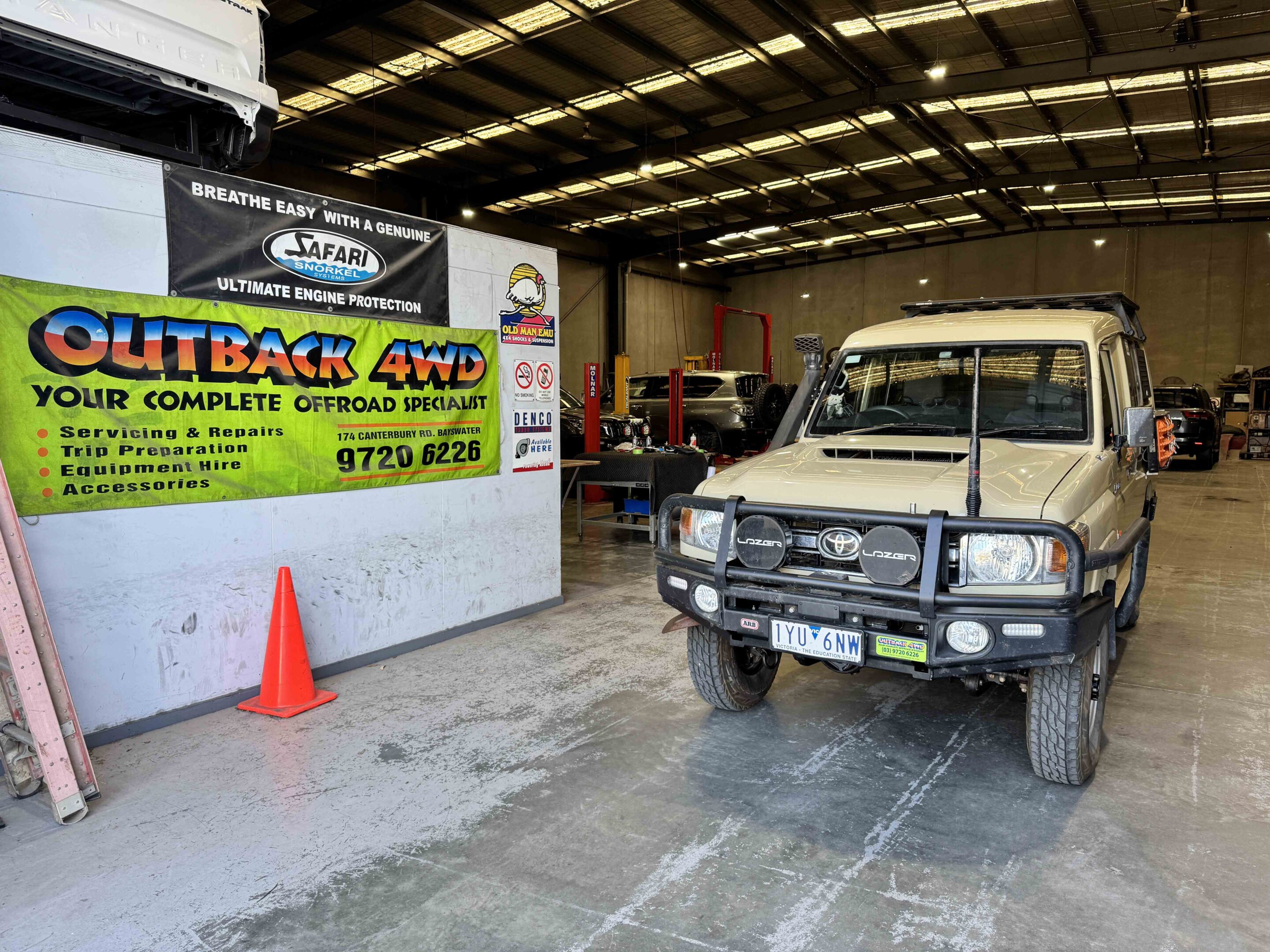
In preparation for the trip ahead, I had the team at Outback 4WD give the Troopy a thorough service, including replacing all the wheel bearings. While it was in the workshop, we also fitted a Long Ranger 40-litre underbody water tank. The tank itself is mounted around the middle of the vehicle, with the filler located under the bonnet and the water pump and outlet positioned down at the rear. It was a bit fiddly to install – and I’m glad I didn’t try to tackle it myself.
Those who follow our builds and travels will know we’ve fitted a pair of Sentinel Elite 9-inch lights from Lazer Lamps to the Cruiser. Now that we’ve clocked up some miles behind them, I’m even more impressed. The build quality is excellent, there’s no movement over corrugations, and the light output is outstanding. We’ve just swapped the lens covers to a set of clear ones so we can use the lights without hopping out to remove the black covers – lazy, I know!
We’ve also wrapped most of the bodywork in BushWrapz, opting for the top-tier ‘Advance’ kit, which you can fit yourself. The material is pre-cut to shape, but the Troopy has some big slabs of panel, so expect to be handling large sheets. It’s not particularly difficult to install, but it pays to watch the installation videos.
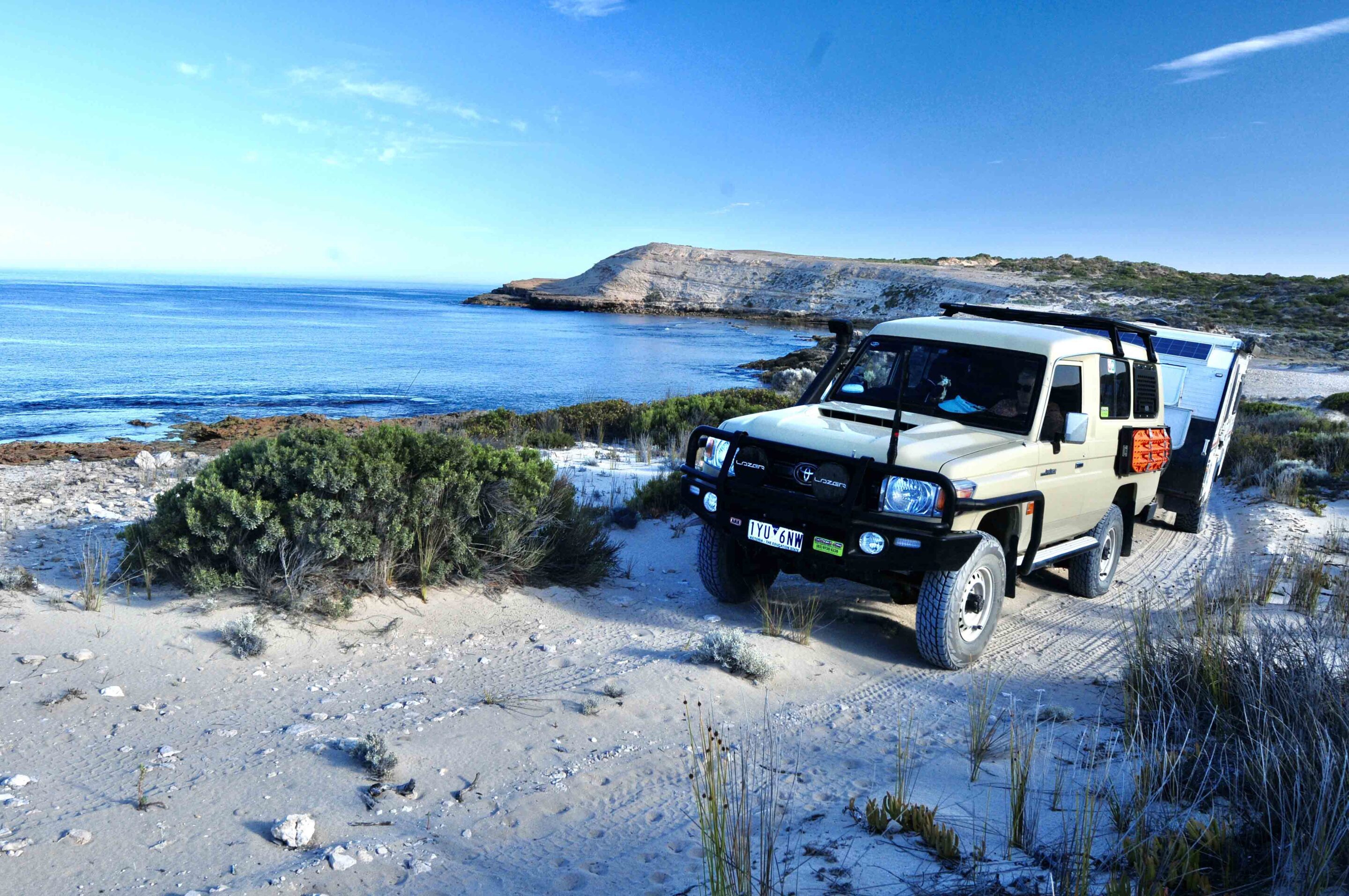
For those big sections, having two people – or at least four hands and long arms – is almost essential. Unless you’ve got experience, set aside more than a day for the job. The Troopy kit costs around $700 and, judging by our experience with a 200 Series Cruiser and a previous HiLux, BushWrapz does a great job of protecting paint from scratches and stone chips.
Sticking with the DIY jobs, I recently replaced the door seals on the front doors. Earlier on, we’d fitted Car Builders soundproofing to the floor, roof, doors and side panels – which made a big difference, but also highlighted the wind noise coming through the factory seals. If you look closely, the original plastic strip Toyota fits to the 70 Series is pretty hopeless at keeping wind noise out. A trip to the local Clark Rubber store and a rummage through its range of sealing rubbers yielded a suitable profile.
It’s a simple job to remove the old strip and fit the new seal, and each door took about 2.7 metres of material. Now I have to crack a window just to shut the door properly – a sure sign the seal’s doing its job. I’m thinking of doing the rear doors next, but they’ll need a slightly smaller profile. You can buy kits online, but going the Clark Rubber route costs about half as much.
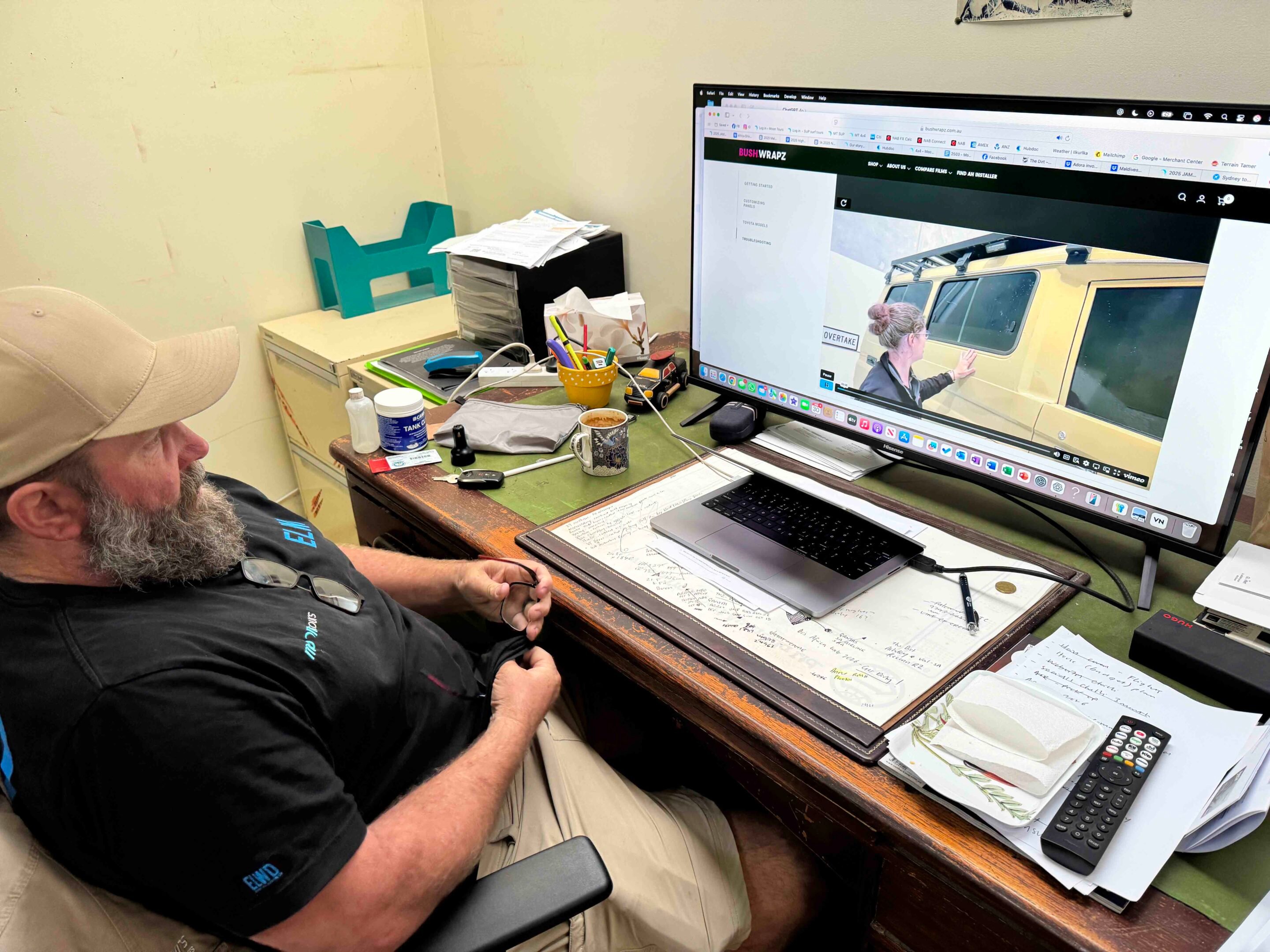
Over the years we’ve used the best long-range comms gear available, so it won’t surprise anyone that, after running a couple of Starlink units on previous vehicles, we’ve now fitted a Starlink Mini to the Troopy. These compact, lightweight satellite units are easy to transport and set up just about anywhere.
We’ve seen them sitting on dashboards, mounted to van roofs or lashed to anything that gets them a clear sky view. We opted for a roof rack mount, and after searching online, ended up with a bracket from EC Offroad (wherever they are!) that holds the unit securely and sits almost flush with the rack. There are plenty of mounting options out there, but in our view, a flush and firm fit is the way to go.
The Starlink Mini is a breeze to set up, with an integrated router eliminating the need for extra cables between the dish and router. While its Wi-Fi range is more modest than the full-sized Starlink units, we’ve found it more than adequate for use in a vehicle or at camp. The Mini costs around $550 – a bargain when you consider what a sat phone or HF radio used to set you back – with monthly access fees ranging from $80 to $195 depending on your data plan. However you run it, Starlink has proven to be a total game-changer for remote-area travellers.
Observant readers will have noticed I haven’t yet changed the OE wheels and tyres, much to the bewilderment of a few long-time four-wheel driving mates. Truth is, I’ll get to it eventually, but for the kind of touring we’re doing in the Troopy right now, it’s not a priority. The factory Bridgestone A/Ts are fairly basic and don’t wear all that well – 40,000km is about the limit – so I’m already on my second set. Thankfully, they’re relatively cheap to replace. The upside? They’re light, even on steel rims, which I prefer for scrub work anyway.
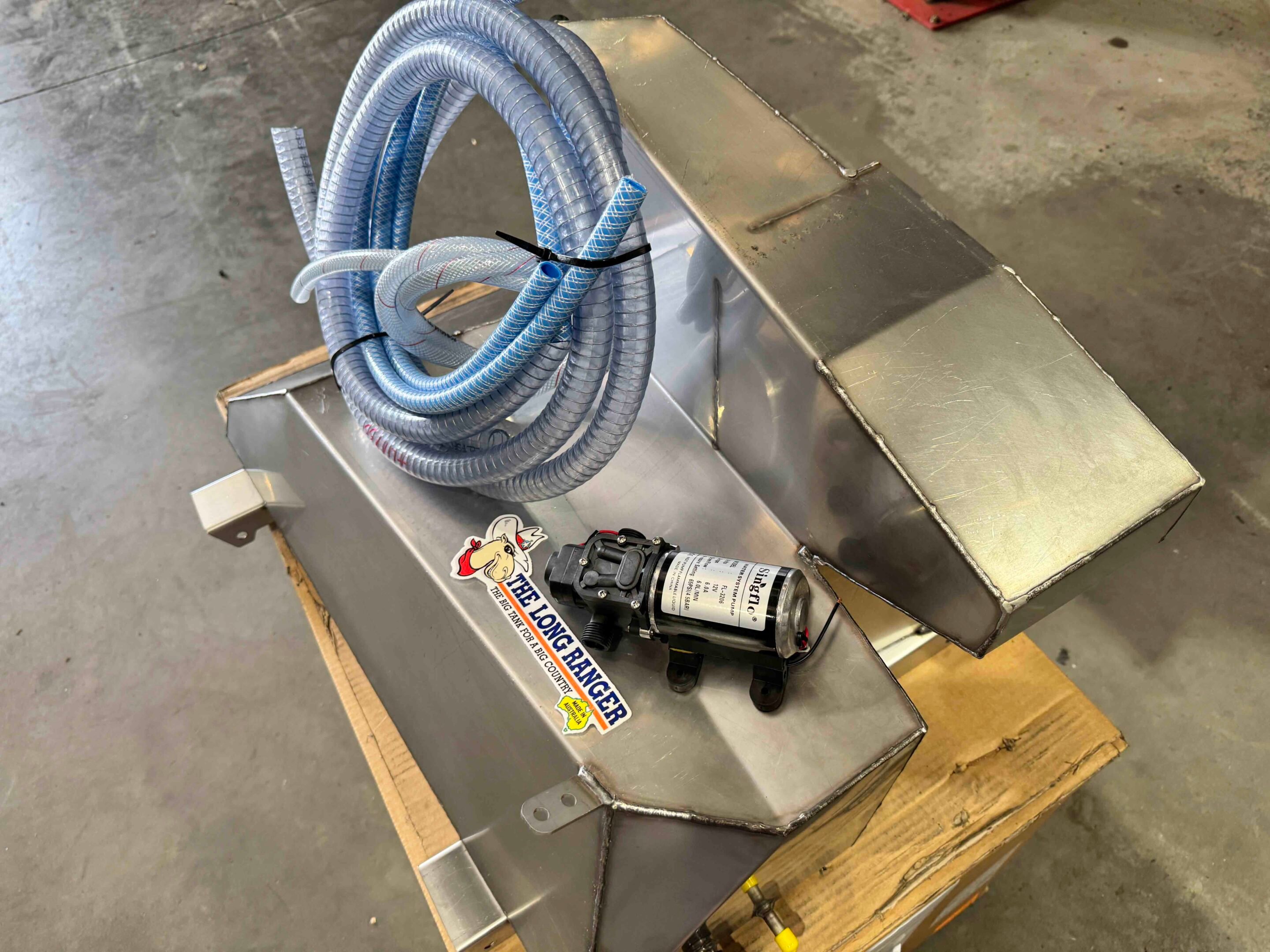
The RV Storage Solutions drawer system, fridge slide and cargo barrier continue to do their job faultlessly, making the most of the available space in the Troopy. Improving access to the rear, the Mission 4×4 gullwing windows have been a godsend, while their MaxTrax carrier and fold-down table combo is one of the most convenient and frequently used additions we’ve made.
Of all the accessories we’ve fitted to the Troopy, the Terrain Tamer parabolic springs remain one of the most impressive upgrades. They deliver a surprisingly good ride, whether the vehicle is lightly loaded or packed to the gunwales and towing a camper. Sure, they don’t add much in terms of wheel travel – but for a 70 Series, this is about as good as it gets.
Now all that’s left is to pack the Troopy and the camper, and we’ll be ready to hit the road – and the tracks – for what we hope will be another trouble-free adventure.
- Total kilometres: 47,000km
- Average fuel use: 13.0L/100km (without camper); 16.0L/100km (with camper)
We recommend
-
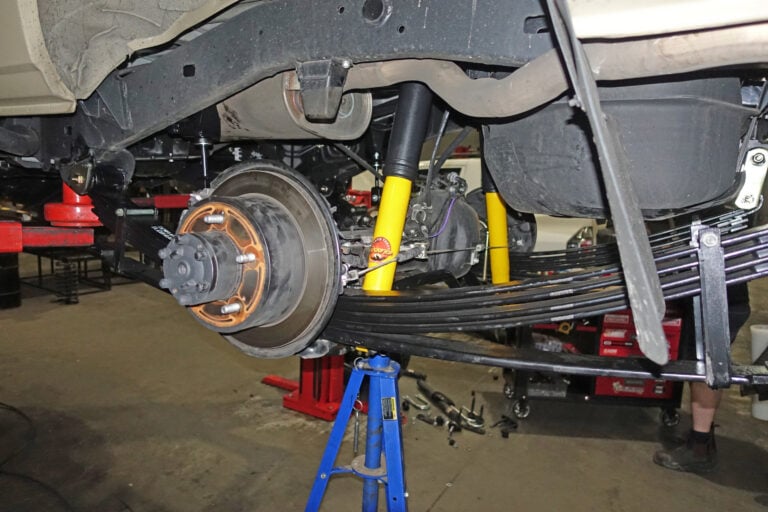 Gear
GearRon Moon's TroopCarrier gets Terrain Tamer GVM upgrade
Ron engages Terrain Tamer to improve his Troopie’s load-carrying capability and its ride… whether loaded or not
-
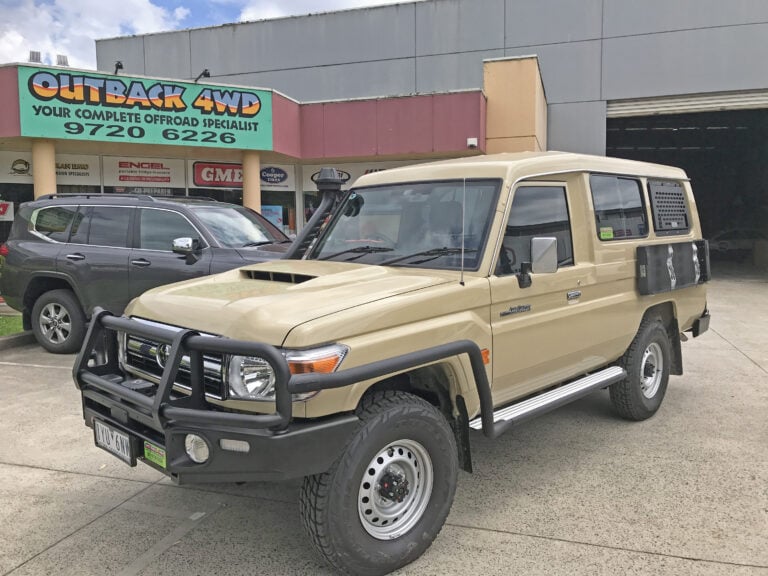 Gear
GearRon Moon's TroopCarrier gets ARB bull bar, Carbon Tank winch + more
Ron fits a new bar and winch to his TroopCarrier, to protect it from the dangers of outback travel

